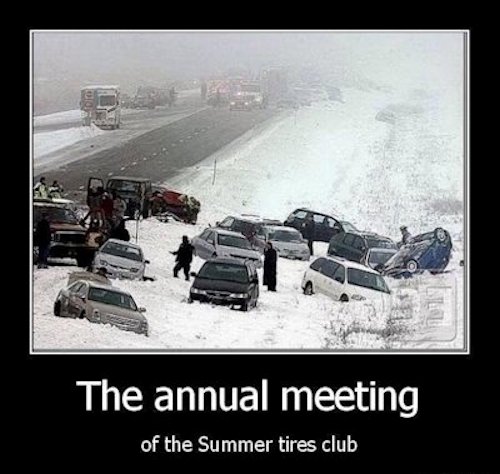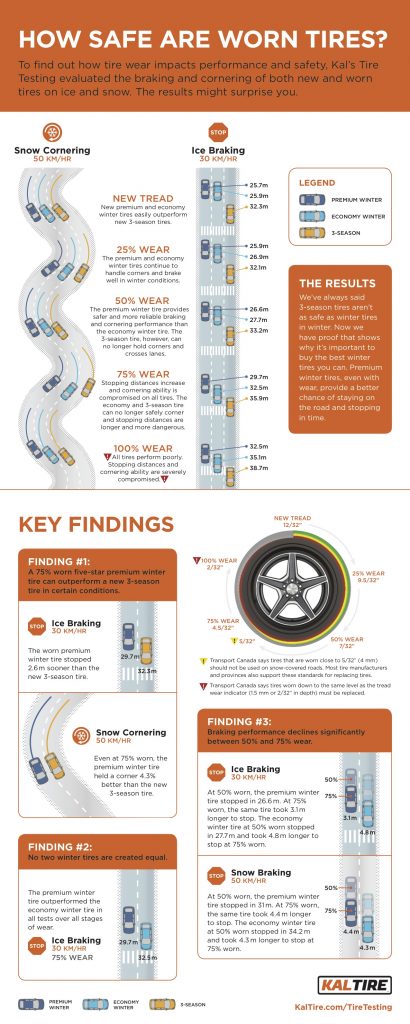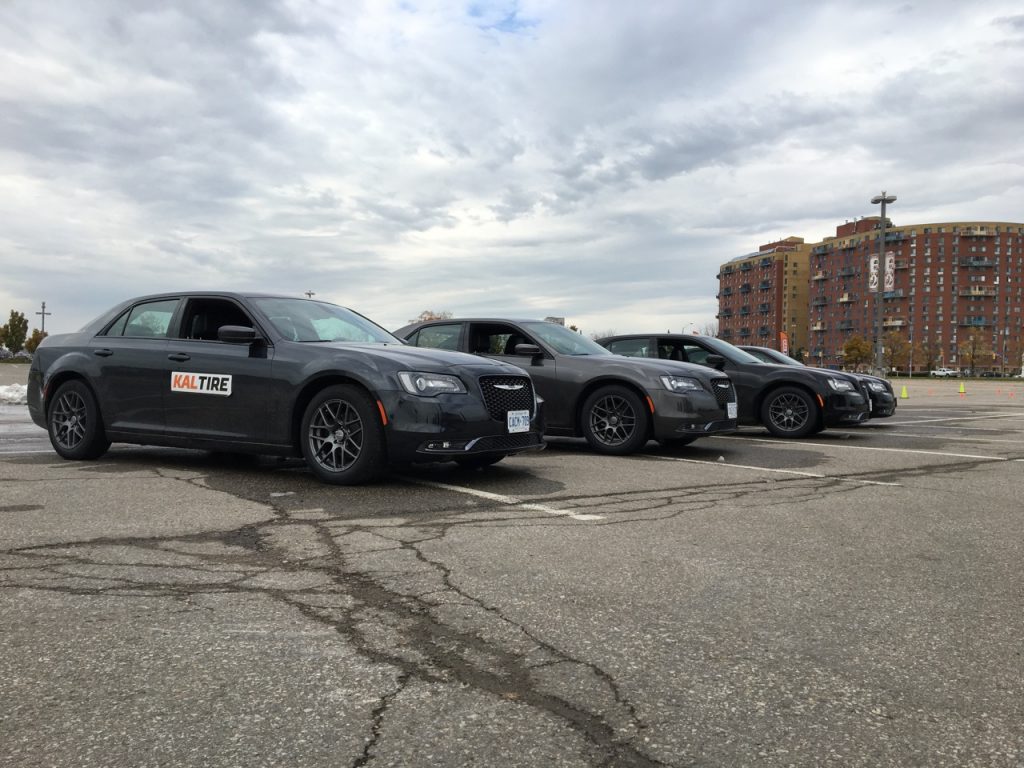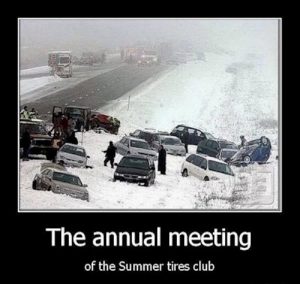Skidding out in the snow and ice on a closed course with great winter tires and a professional driver is super fun.
What’s not fun?
Skidding out on an open road, with no professional driver beside you and multiple hazards to hit. If you haven’t experienced that feeling, then you are obviously not Canadian. My fellow Canucks are all too familiar with that feeling of a car skidding on ice or snow; it’s a rite of passage and it’s terrifying.

GET YOUR WINTER TIRES ON!
Last year Kal Tire invited me to join them in Edmonton for a winter tire test drive. It was an eye-opener for me to learn that so called “all-season” tires are actually a myth much like unicorns, the Loch Ness Monster, and me fitting into size 0 jeans. The reality is that snow tires / winter tires in Canada are a must, so if you haven’t made an appointment to change your tires yet, get on it. Don’t be that Canadian fishtailing all over the road when the first snow hits.
Let’s say you’re a dutiful Canadian, and you already have your winter tires on. Do you know where your tread wear is on them? Are you aware of how your winter tire will perform with a new tread from 25% to 75% worn are completely different and it should concern you. Stopping distances increase exponentially the more tread a tire loses, up to 4 metres (13 feet) when travelling at 30 km an hour. That’s a HUGE difference and all the more frightening when you consider that no one actually travels at 30km an hour, except my mother. As speed increases, so does stopping distance.

I was able to test out four tires this year at #KalsTireTesting; new winter, 75% worn winter, new three-season, and 75% worn three-season. As a Kal Tire keener I was not surprised to feel the difference between a new winter tire and a new three-season on snow tire. The stopping distance is dramatic, and I honestly just can’t say this enough, your safety and frankly the safety of others on the road is at stake. During Kal Tire’s testing they also compared premium winter tires to economy winter tires. Premium winter tires, even with some wear, provide a better chance of staying on the road and stopping in time.
Winter Tires: What Else Did I Learn?
Kal Tire reaches out to independent tire testing group, Sidorov Professional Driver Training, led by Alan Sidorov, an international race car driver, to conduct their tire testing. His team includes rally champions, advanced driving instructors, and vehicle development testers as well as former RCMP and military officers with extensive driving experience. In other words, there was no way I was letting this opportunity go to waste. I was lucky enough to meet Richard Warrington and Mark Jennings-Bates for my snow tire test drive this year and I walked away with some valuable insight and information.
Remember CPR for Skid Recovery
The first thing I asked Richard when I got in the car was how do I recover from a skid in icy, snowy conditions. He told me to remember CPR.
C – Correct
P – Pause
R – Recover
While this is all very well in theory, I couldn’t help but wonder who would actually say to themselves “and now pause” when skidding out on a road. There’s also some practical applications to be considered here. Apparently you need to recover at the same speed as your skid. What? The whole thing made my head hurt, which brings me to my next point.
Winter Driver Training
While it’s wonderful that our young drivers take driver’s education, I often wonder why we don’t make defensive driving in the winter mandatory. The best way for CPR to be second nature it to practice it in a safe environment. Unfortunately, for many Canadians our first experience with an out of control vehicle in snow is on the road. After participating in two #KalsTireTesting events, I know that when my girls start driving, I’ll be seeking out a winter defensive driving course near us. It just makes sense.

Narrow Tires; Winter Tires
I drive a BMW X5 and I am seriously in love with it, except in the winter. In the winter, it doesn’t feel as stable on the road as my husband’s Jeep Cherokee and since we’ll be spending the ski season in Mont Tremblant this year (driving snowy, icy roads every weekend), I wanted to know what was up with that. Turns out, that the reason I prefer the Jeep is because narrow tires perform better in the snow. This year, narrower winter tires are going on the BMW which will give me much more peace of mind.
Rear View Cameras
This has absolutely nothing to do with tires, but when I mentioned to Mark that my rear view camera and subsequent beeping on my BMW drove me f*$*king crazy, he nodded in agreement. My feeling is that they are actually more of a distraction then a help, and that they give drivers a false sense of security. If our phones are cause for distracted driving, I’m curious how screens in our cars are not. What do you think? Is your car safer or more dangerous with cameras?


 The Crown is a Royal Event for Historical Fiction Fans
The Crown is a Royal Event for Historical Fiction Fans